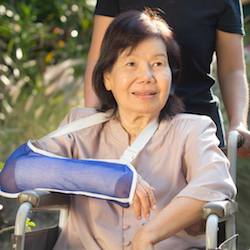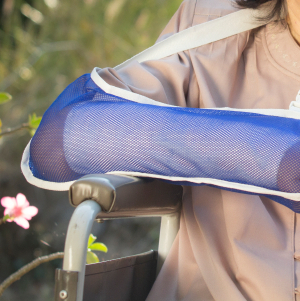If you prescribe an anti-inflammatory for your patients after knee, hip or shoulder surgery, you may want to suggest they take them in the morning or at noon, but not at night. A McGill-led study shows, for the first time, that circadian clock genes are involved in healing from surgery. The researchers demonstrated that anti-inflammatory medications are most effective in promoting post-operative healing and recovery when taken during the active periods of the body’s biological clock.

The study, recently published in Scientific Reports, also suggests that if anti-inflammatories are taken either in the afternoon or at night, during the resting phases of the circadian rhythm, they can severely deter healing and bone repair following surgery. That’s because these are the periods when osteoblasts are rebuilding bone.
Circadian clock genes involved in healing from surgery
Although prior research has shown that circadian clock genes play a role in diseases such as cancer, Alzheimer’s, arthritis and Parkinson’s, this is the first study to see the effect of the circadian rhythm in any type of surgery or injury. Faleh Tamimi Marino, the Canada Research Chair for Translational Cranofacial Research is the senior co-author on the article, along with Belinda Nicolau and Laura Stone. All are McGill’s Faculty of Dentistry.
Inflammation, following surgery, is crucial to healing since part of the process involves both destroying any bacteria that may be in the area, and signaling to attract the cells that will rebuild the tissues. But the process is not a constant.
“There are periods of inflammation that are actually very destructive, and there are periods that are constructive and important for healing,” said Faleh Tamimi. “So many pharmaceutical companies have been trying to develop drugs that will inhibit the destructive processes during inflammation but not interfere with the helpful ones.”
He adds, “The idea that I came up with in the shower one morning is that we could perhaps use the circadian variations in inflammation to our advantage. The destructive component of the circadian rhythm as it relates to bone healing occurs during the day, when cells known as osteoclasts break down bones. The constructive cells, known as osteoblasts that rebuild bones are active at night. By limiting the use of anti-inflammatories to the mornings and giving analgesics at night for the pain, I thought we might get better results in terms of bone healing than if anti-inflammatories are given throughout the day.”
Significant differences in rates of healing and in genes
The researchers compared pain and bone healing in two different groups of mice with fractured tibia. One group was given constant doses of anti-inflammatories over a twenty-four hour period, while the others were given anti-inflammatories only in the morning – during the active phases of the circadian rhythm – and analgesics at night. The researchers found that the second group recovered from the pain of the injury, and regained bone strength more quickly and more fully. Surprisingly, they also noticed differences between the groups in the expression of over 500 genes specifically related to bone healing processes. “Its almost as if morning anti-inflammatories and evening anti inflammatories were two different drugs” adds Faleh Tamimi.
The researchers found the following results:
- Pain intensity, inflammatory mediators associated with wound healing and the pharmacological action of NSAIDs vary throughout the day due to the circadian rhythm regulated by the clock genes.
- According to this rhythm, most of wound healing mediators and connective tissue formation occurs during the resting phase, while pain, inflammation and tissue resorption occur during the active period of the day.
- Here they show, in a murine tibia fracture surgical model, that NSAIDs are most effective in managing postoperative pain, healing and recovery when drug administration is limited to the active phase of the circadian rhythm.
- Limiting NSAID treatment to the active phase of the circadian rhythm resulted in over-expression of circadian clock genes, such as Period 2 (Per2) at the healing callus, and increased serum levels of anti-inflammatory cytokines interleukin-13 (IL-13), interleukin-4 (IL-4) and vascular endothelial growth factor.
- By contrast, NSAID administration during the resting phase resulted in severe bone healing impairment.
The rhythm of the body’s own healing
“When I was a child, and I cut myself, my mother would say to me, don’t worry, go to sleep and tomorrow you will be better,” said Haider El-Waeli, the first author on the study, who wrote the paper while working on his PhD at McGill and is now a clinical resident at Dalhousie University. “It turns out she was right because most of the healing happens at night.”
“The body has a rhythm,” adds Tamimi. “And if you give anti-inflammatories in the morning you are working with the rhythm of the body and when you give them at night, you are working against it so you disrupt the healing.”
The researchers conclude there is an urgent need for better strategies to manage postoperative pain. One way of achieving this is by developing NSAID treatments that control pain and inhibit inflammatory catabolic activities while sparing the anabolic pathways of wound healing.
As a next step, the researchers are collecting preliminary data from a clinical trial monitoring pain and healing related to extraction of wisdom teeth, using two different drug treatments – one involving exclusive use of anti-inflammatories, and the other administering anti-inflammatory medications only in the morning and at noon, and analgesics in the afternoon and evening. The preliminary results are promising.
Click Here for Full Text Study





